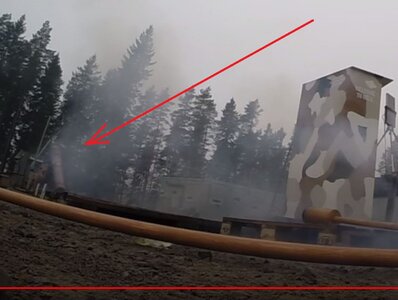Are the trunnions on the centerline of the barrel or are they below it? Some pictures look like they are below center.
Sorry, I forgot. English late 18th century
Sorry, I forgot. English late 18th century
Last edited:
 |
As a way to introduce our brass coins to the community, we will raffle off a free coin during the month of August. Follow link ABOVE for instructions for entering. |
 |

Most canons I've seen have the trunnions below center.Are the trunnions on the centerline of the barrel or are they below it? Some pictures look like they are below center.

The trunnions were / are under the centerline of the muzzle
View attachment 299812
Here you can see it on original naval guns
View attachment 299806 View attachment 299809
View attachment 299807View attachment 299808
View attachment 299810
Yes - it is easier to drill the hole in the centerline, but technically incorrectRight is real the observation of Uwek, see how many guns on the models are wrong of that position of the mumps
they have to be off centerAre the trunnions on the centerline of the barrel or are they below it? Some pictures look like they are below center.
Sorry, I forgot. English late 18th century
No I'm not an engineer but I would be surprised if Archimedes and levers aren't involved. Lower centre of gravity for pivot point might also be considered.OK now we've decided that they are off center(below the center line of the barrel). Now, why?? I'm thinkin' it's to make the barrel slightly unstable so it's easier to move. What other guesses do we have? Must be an engineer on here.
Geoff Smith, MSc FIMF Scientist, Ordnance Society. Gunpowder researcher. Says on Quora:No I'm not an engineer but I would be surprised if Archimedes and levers aren't involved. Lower centre of gravity for pivot point might also be considered.
Now that makes sense to me.Cannon were trained for direction by looking along the barrel. However, with the touchhole at the top, naval cannon were directed for elevation by looking along the side of the barrel. Graduations called quarter sights were often marked on the base ring and a sight taken from them along the top of the trunnion which was in line with the centre of the bore. Later land ordnance were provided with removable sights which were taken off before firing but this was not popular on board ship as they were liable to get lost. At the effective range of most sea battles this was sufficiently accurate and rate of fire was much more important than absolute accuracy.
I am pretty sure, that this has something to do caused by the forces on the muzzle / barrel during the firing. For this the center of mass, the pivot point and the forces would be necessary to find out.......OK now we've decided that they are off center(below the center line of the barrel). Now, why?? I'm thinkin' it's to make the barrel slightly unstable so it's easier to move. What other guesses do we have? Must be an engineer on here.


.....The recoil can cause the breech to bounce off the quoin, so that the muzzle tips down towards the end of the recoil, and then settles back once the gun comes to rest - our gun did this fairly often, at certain angles of elevation, probably because the trunnions were very close to the balance point.


Hallo @fred.hockerOn most guns, the top of the trunnion is on the centreline of the bore. This might be used for sighting in combination with a witness mark on the muzzle bell (although it is no more inherently accurate that sighting along the top of the barrel if one allows for the taper of the tube), except that the top of the trunnion is almost entirely covered by the capsquare fastening the gun to the carriage and so hardly visible in use.
The shot leaves the muzzle before any parts of the tube or carriage start to move significantly, so trunnion placement probably does not affect accuracy in a significant way, although early modern gunners had no way to observe this directly. Placing the trunnion below the bore axis does offset the recoil force from the pivot point of the tube, so the recoil tends to push the breech down onto the carriage. We could see this in the high-speed video of the tests we made with a full-scale copy of a Vasa 24-pounder in 2014, with service load and shot. It may have been felt that forcing the breech down onto the quoin would make the gun more stable during firing or improve accuracy.
In terms of location along the length of the barrel, the trunnions are usually placed just in front of the balance point of the gun, so that the tube is slightly breech-heavy, but elevation can still be adjusted. On the Vasa 24, the tube weighs 1250 kg, but I can lift the breech by myself, or depress the muzzle by leaning my weight on it.

